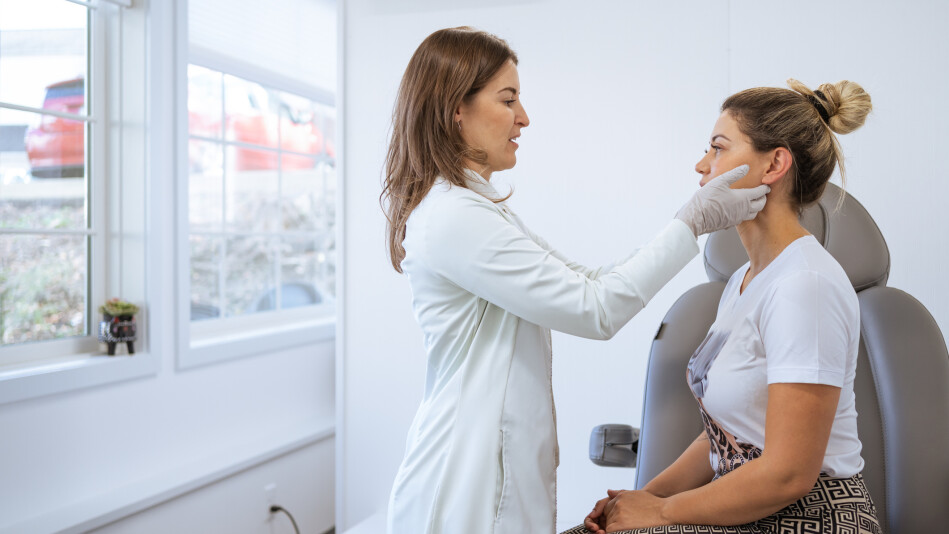8 Things Your Dermatologist Wants to Tell You
The real reason her skin looks so amazing (and other insider pieces of advice).

Photo: Michele Pevide/Getty Images
What she wants to tell you: "You could be spending too much time at the nail salon."
"Patients often come into the office complaining of an itchy red rash on their eyelids," says Melanie Grossman, MD, a dermatologist based in Manhattan. "And they assume it's from their makeup or cleanser." This condition, called eyelid dermatitis, is also caused by irritants in the air—the most likely culprit being the chemicals from nail polish, polish remover and other products wafting around in the nail salon, Grossman says.
How to help her—and you: If it becomes a recurring problem, consider limiting manicures to once every two weeks (and maybe find a salon with better ventilation).
What she wants to tell you: "Off-label uses of (certain) drugs are fine."
Patients don't realize that many common prescription drugs can do double duty. "Antihistamines work for some people with rosacea," says Debra Jaliman, MD, a Manhattan-based dermatologist and the author of Skin Rules. "I've also used Aczone, a prescription acne medication, for keratosis pilaris—better known as those little-bumps-on-the-arm." And then there's Botox, which Jaliman says can be a lifesaver for people who suffer from excessive sweating or migraines. Other creative uses: It can prevent a new scar from stretching and can even act like a temporary nose job. "An injection at the tip of the nose can give a bit of a lift," says Jaliman, "subtly changing your profile."
How to help her—and you: Ask! Bring up a related segment you saw on TV or an article you read (like this one).
What she wants to tell you: "Actually, benzoyl peroxide doesn't turn pimples into scabs."
"People definitely lie about picking their skin," says Jaliman. "But we can always tell, because we'll see the scabs, the scratch marks or the small depressions caused by fingernails."
How to help her—and you: Be honest. Your dermatologist may suggest deterrents—like hiding your magnifying mirror or dimming the bathroom lights—or, if it’s serious, she may refer you to a psychiatrist who can get to the bottom of the issue. "We're here to help," Jaliman says.
What she wants to tell you: "You don't really need to see me for one of these..."
A facial. Your dermatologist isn't the only person who can squeeze, massage and smooth your skin while you relax in an easy chair. It's perfectly fine to see an aesthetician for one, says Jennifer L. MacGregor, MD, a board certified dermatologist at Union Square Laser Dermatology in New York City. In fact, some derms don't even offer facials.
How to help her—and you: If facials are your thing, treat yourself to one at your local medical spa (the aesthetician at a medical spa is more likely to have been trained by a dermatologist or to work with one than one who works out of a salon). Always ask to see proof of their training as well as their state license, which should be hanging on the wall. Keep in mind that there isn't much research about the long-term benefits of facials, save for the relaxed glow that comes from lounging in a chair and being tended to and moisturized for an hour. But for many of us, that's enough.
Next: The best way to get the most out of your appointment...



